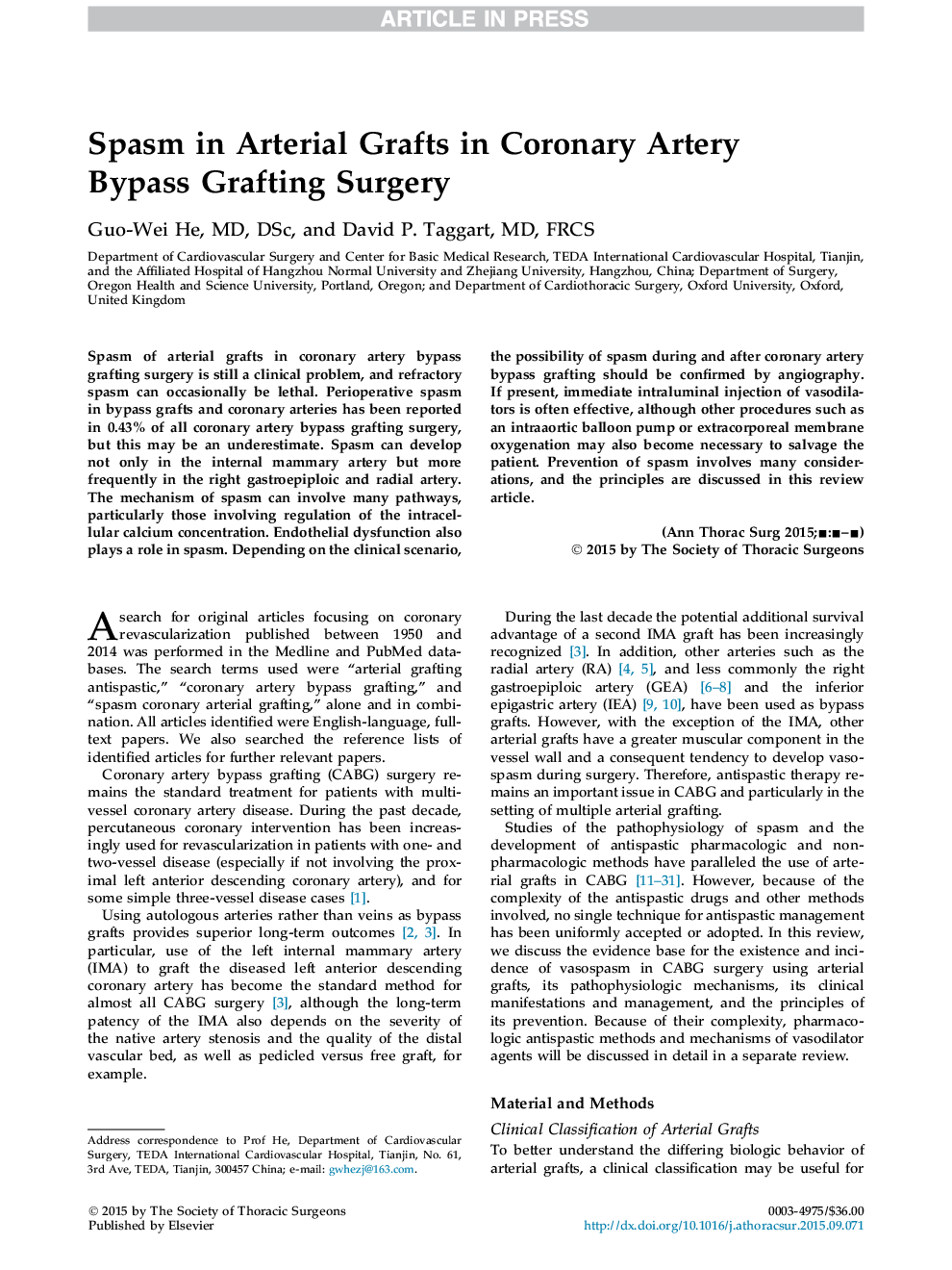| Article ID | Journal | Published Year | Pages | File Type |
|---|---|---|---|---|
| 2871523 | The Annals of Thoracic Surgery | 2016 | 8 Pages |
Abstract
Spasm of arterial grafts in coronary artery bypass grafting surgery is still a clinical problem, and refractory spasm can occasionally be lethal. Perioperative spasm in bypass grafts and coronary arteries has been reported in 0.43% of all coronary artery bypass grafting surgery, but this may be an underestimate. Spasm can develop not only in the internal mammary artery but more frequently in the right gastroepiploic and radial artery. The mechanism of spasm can involve many pathways, particularly those involving regulation of the intracellular calcium concentration. Endothelial dysfunction also plays a role in spasm. Depending on the clinical scenario, the possibility of spasm during and after coronary artery bypass grafting should be confirmed by angiography. If present, immediate intraluminal injection of vasodilators is often effective, although other procedures such as an intraaortic balloon pump or extracorporeal membrane oxygenation may also become necessary to salvage the patient. Prevention of spasm involves many considerations, and the principles are discussed in this review article.
Keywords
Related Topics
Health Sciences
Medicine and Dentistry
Cardiology and Cardiovascular Medicine
Authors
Guo-Wei MD, DSc, David P. MD, FRCS,
